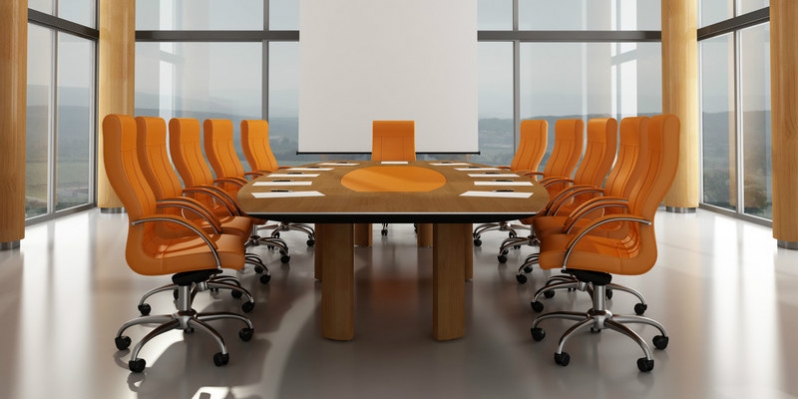Conference tables are often seen as a symbolic item of a business, a piece of furniture which should reflect professionalism and quality, so usually a lot of effort and dollars are invested into obtaining a truly impressive piece. It’s great to see that some office fitout items receive such attention, but …
How much is an oversized meeting table actually costing you – in ideas, business, or valuable opportunities?
I was recently invited to a meeting with the heads of a design company to get to know each other better and explore potential opportunities for working together. I went well prepared for the group’s agenda, bringing drawings and photos to use in the discussions – after all, designers are visual people.
When I arrived I was directed to a meeting room with one enormous meeting table, complete with beautiful flowers, artworks and a water jug. It was certainly a very impressive table, but it was hard to appreciate it just then … The three people I met sat themselves down at three corners of the table, so it only seemed appropriate for me to take the fourth one.
Unfortunately, in this setting, showing visuals to the others was nearly impossible, and it was hard work even to have a connected conversation. It was a somewhat awkward discussion; I felt as if I was addressing a large audience, trying to engage people sitting left, right and centre.
By the end of the meeting we had a good understanding and appreciation of what the others do, but there was little energy or buzz – you know, the sort of thing that actually makes you want to put things into motion.
Objectively, the source of my problem was mundane: being part of a meeting around a huge table. As this is in fact a typical scenario, can you really blame such things for making a meeting go flat?
Well, you can’t overestimate the power of rapport and personal connection when doing business! On that occasion it was perhaps not such a great loss to miss out on the chance to strengthen my relationship with a few people who were already in my network.
But what are you – or your stakeholders – missing out on? Could tables like this kill big opportunities?
Of course it’s not impossible to have a great meeting in the wrong setting; in fact, I had an amazing meeting recently around an enormous table – in a kitchen!
However, research studies show that table size does in fact matter; it can contribute to the success or failure of meetings, projects and relationships.
Very wide tables hinder conversation. When sitting too far from each other, we tend to interact in a formal way and to compete rather than collaborate. So large tables (wider than around 1.6m) are more suitable for presentations and for meetings where it’s beneficial for people to interact in a competitive spirit.
Small tables are better for teamwork; they help us build social connection and open up. When we are closer to others, we are more likely to collaborate and work toward a common goal. For small group discussions, tables that have capacity for around four people can be ideal. (However, it’s important not to crowd people.)
A few quick tips to make your meetings more successful:
- Choose and use tables that best suit your work activities
- Have a variety of desk sizes, or use mobile tables that you can push together as needed
- If the conference room is the only space for having meetings, get a table that is not too wide
- The way people organise themselves around a table should also support the team’s work (seating arrangements will be discussed in detail in a subsequent blog post)
And if you make the right choices, your impressive meeting table will more likely get the appreciation it deserves.


Thank you Anetta for sharing your insights in this post!
This is really helpful and you got me thinking about our boardroom table which is way to big for most meetings. We’ve certainly had very successful meetings around the “big” tables, but I believe our most productive meetings were around mid-sized tables. Looking back, the best work we’ve done and the best deals were negotiated in a more relaxed environment, e.g. cafes and we had the pleasure to work on luxury boats to help with innovation projects. Unfortunately, this is not always possible, so thanks again for bringing this topic to my attention!